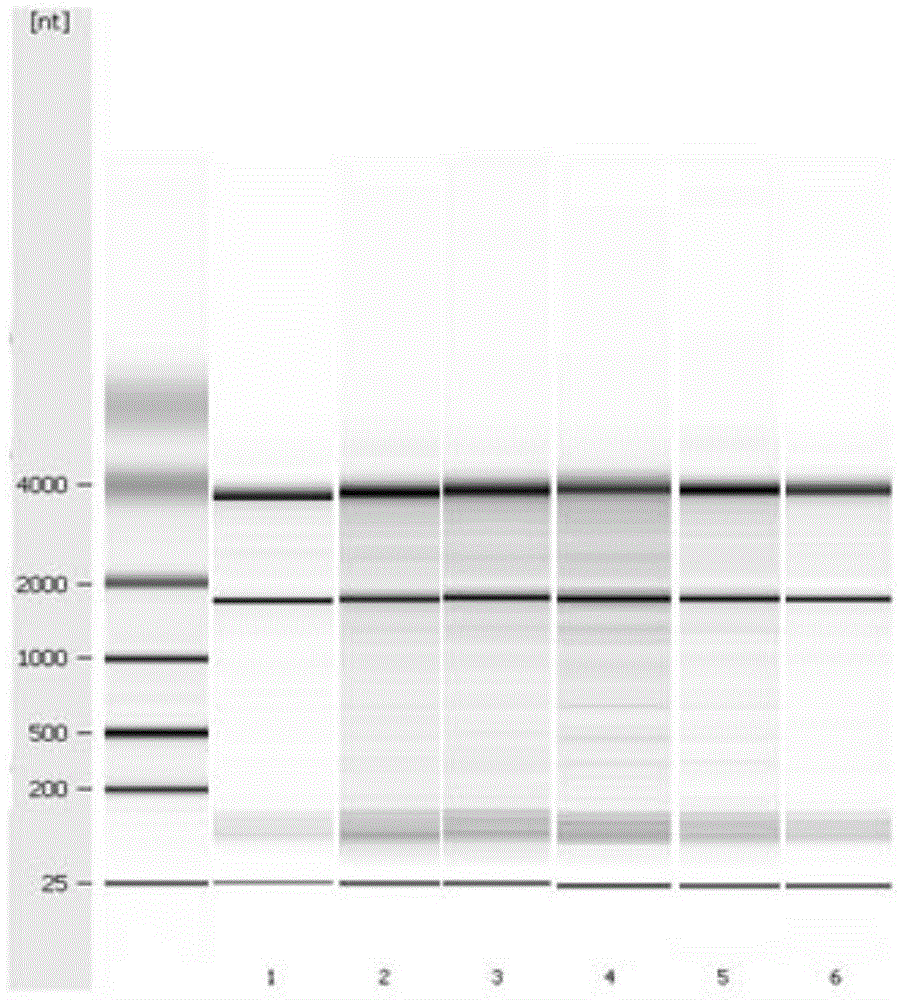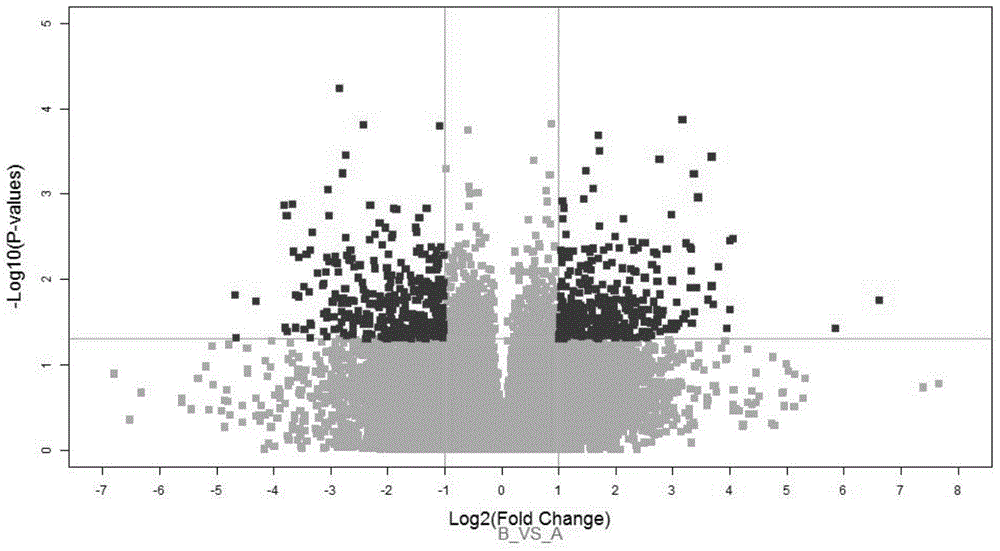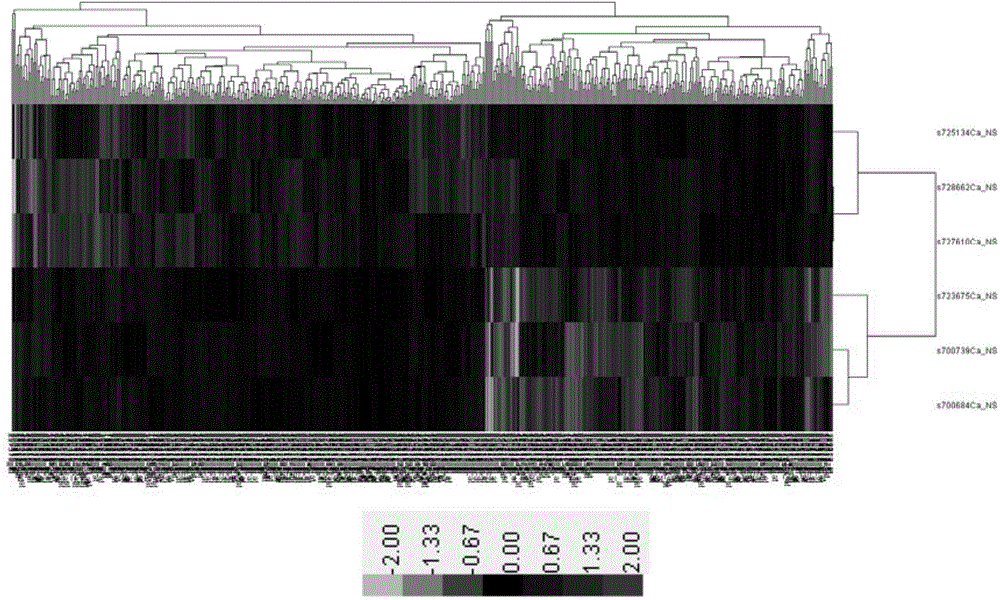Application of STC2 gene as colorectal cancer liver metastasis molecular marker
A technology for colon cancer and liver metastasis, applied in the biological field, can solve the problems of unfound sensitivity and specificity
- Summary
- Abstract
- Description
- Claims
- Application Information
AI Technical Summary
Problems solved by technology
Method used
Image
Examples
Embodiment 1
[0032] Example 1. Discovery of molecular marker gene STC2
[0033] 1. Expression profiling microarray screening of differentially expressed genes in colorectal cancer liver metastases
[0034] 1. Extract RNA
[0035] There were 6 cases of colorectal cancer, including 2 males and 1 female in the colorectal cancer liver metastasis group, with a median age of 54.67 years; 2 males and 1 female in the colorectal cancer non-hepatic metastasis group, with a median age of 68.67 years. As shown in Table 1 below, the sample name is indicated by the hospitalization number of the patient, with two digits hidden in the middle.
[0036] Table 1 is the colorectal cancer cases
[0037]
[0038] The RNA of the cancer tissues of the 6 colorectal cancer patients mentioned above was extracted, and the RNA quality inspection results of the 6 samples are shown in Table 2 below. In this study, Nanodrop ND-1000 was used to measure the absorbance at 260nm and 280nm to determine the concentration...
PUM
 Login to View More
Login to View More Abstract
Description
Claims
Application Information
 Login to View More
Login to View More - R&D
- Intellectual Property
- Life Sciences
- Materials
- Tech Scout
- Unparalleled Data Quality
- Higher Quality Content
- 60% Fewer Hallucinations
Browse by: Latest US Patents, China's latest patents, Technical Efficacy Thesaurus, Application Domain, Technology Topic, Popular Technical Reports.
© 2025 PatSnap. All rights reserved.Legal|Privacy policy|Modern Slavery Act Transparency Statement|Sitemap|About US| Contact US: help@patsnap.com



